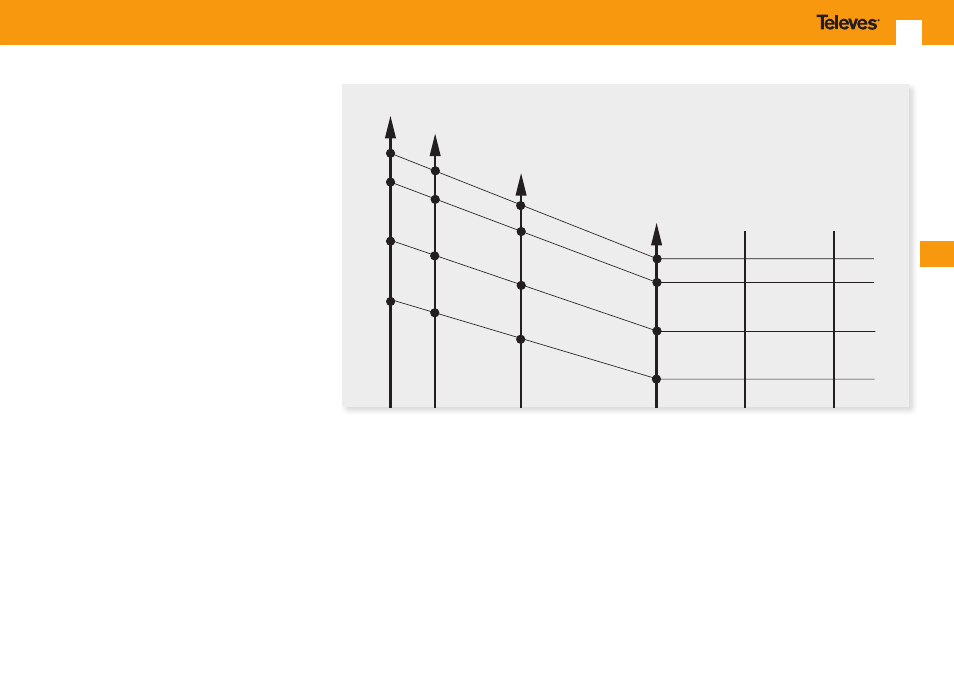Televes DVB-S2 COFDM User Manual
Page 19

EN
19
6. - Selecting the DVB-T output
mode in DVBS2-COFDM
(CI) transmodulators
The standard DVB-T defines various possible
operation modes which enable the DVB-T signal
generated to adjust to the conditions of the
transmission channel. The signal for instance can
travel through a very noisy channel (low C/N) but
will bring with it reception errors. The signal may
also reach the receiver through a number of paths,
one main path and another or various secondary
ones (ECHOES).
Put simply, we could say that the DVB-T operation
modes can be characterised by the following:
1 - Type of modulation
2 - Level of protection against Errors
3 - Level of protection against Echoes
In the following chart, one can see a subgroup
of the possible DVB-T modes that indicates the
information service output (Mbits/s) that each one
can transmit.
The greater the information service output of the
DVB-T mode selected, the greater the number of
TV and Radio services which can be transmitted
through the signal.
NOTE: We suggest choosing one of the DVBT modes
from the chart. Those modes which have not been
included have a lower information service output.
One the right hand side of the chart are the
different unit step functions (64 QAM 2/3, 64QAM
3/4, 64QAM5/6, 64QAM 7/8), each one corresponds
to a degree of protection against errors which the
DVB-T signal can carry.
The higher the step selected, the greater the
information service output (Mbits/s) of the relevant
DVB-T mode, although it´s level of protection
against errors will be inferior and it will require a
higher C/N to receive the signal.
We will now look at the level of protection against
echoes.
To do so, one must select one of the four possible
vertical axes that appear on the left side of the
previous chart (GI=1/4, GI=1/8, GI=1/16, GI=1/32).
The further left the selected axis is, the greater
the DVB-T mode´s information service output
(Mbits/s) will be, but its level of protection against
echoes will be lower, in other words, the maximum
supported echo delay will be inferior.
GI=1/32
GI=1/16
GI=1/8
GI=1/4
31.67
30.16
27.14
24.13
30.74
29.27
26.35
23.42
29.03
27.65
24.88
22.12
26.13
24.88
22.39
19.91
64QAM 7/8
64QAM 5/6
64QAM 3/4
64QAM 2/3
Information service output (Mbits/s) for
DVB-T signals with a 64QAM modulation
in 8MHz channels.
